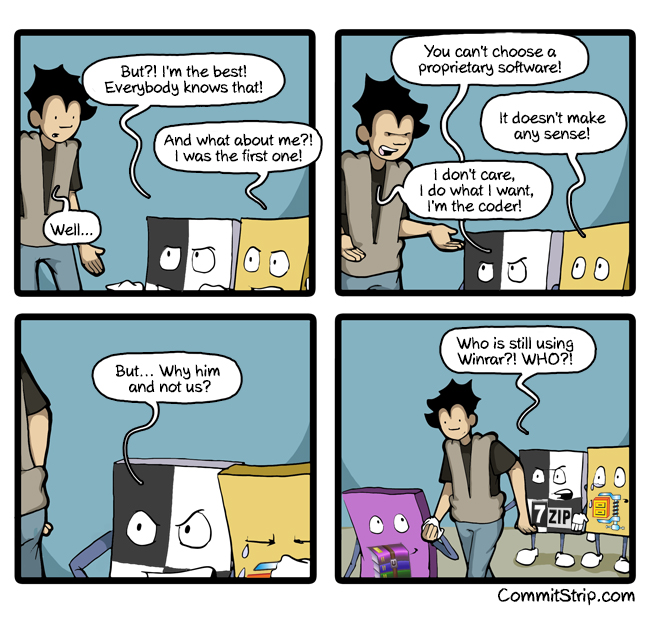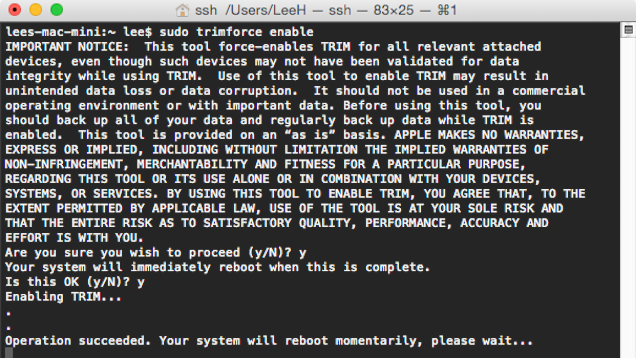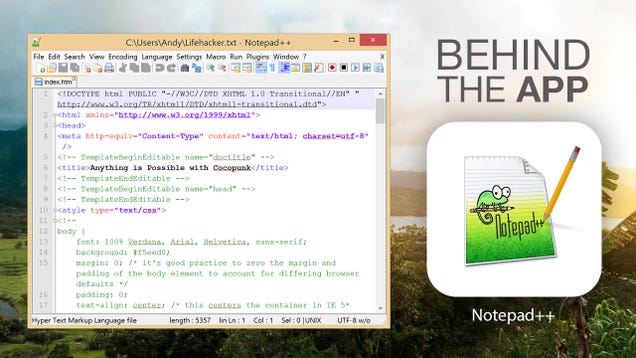
Here’s what you need to know about the strange, tingly sensation that could help you relax.
Millions of people have watched a video of a woman whispering into a camera. She doesn't do anything particularly interesting. She just whispers in a melodic voice and makes seemingly random hand movements. Yet millions of people are mesmerized by it.
For someone who’s unfamiliar with this phenomenon, this might trigger one question: What the hell is going on?
This is the world of ASMR (autonomous sensory meridian response). In this corner of the internet, dozens of video makers record themselves doing something as simple as whispering to elaborate sci-fi role-plays and developing storylines about time travel and demons, and millions of viewers gobble it all up. As one of those regular viewers, let me explain what’s going on.
1) What is ASMR?
ASMR is the term for the sensation people get when they watch stimulating videos or take part in other activities — usually ones that involve personal attention. Many people describe the feeling as “tingles” that run through the back of someone’s head and spine. Others say the feeling is deeply relaxing, and can even cause them to fall asleep.
Although the term ASMR may sound very technical, there’s actually no good science or research behind the phenomenon. The term is believed to have been coined in 2010 by Jennifer Allen, who started a Facebook group dedicated to finding out more about it. The term quickly caught on, as people finally had a way to reference the pleasurable feeling they had been experiencing.
2) Wait, what? So how does ASMR work?
How ASMR works varies greatly from person to person. Some — perhaps most — people don’t get it at all. And the science on ASMR is basically nonexistent, so our understanding of it is so far based on anecdotes from around the internet.
People get the feeling of ASMR from various triggers. Some people enjoy role-plays in which someone gives close personal attention and whispers, while others like videos that show incredibly mundane tasks such as spraying a water bottle, tapping, stirring a bowl of soup, or crinkling wrapping paper. Others are triggered by more elaborate role-plays, which can vary from someone acting like a doctor to getting a haircut. (I tend to prefer simpler videos, which I find very soothing and tingle-inducing.)
The feeling isn’t usually sexual. Although some people are triggered by videos that appear sexual, other people I’ve talked to who experience ASMR emphasized that the tingles and feelings of relaxation have nothing to do with sex. But ASMR is a little similar to sexual turn-ons in that some people are very specific in what they like, and many people tend to grow tired of experiencing the same thing over and over.
/cdn.vox-cdn.com/uploads/chorus_asset/file/3374248/141948241.0.jpg)
Dan Kitwood/Getty Images
Maria, who oversees the Gentle Whispering channel, which has more than 1.3 million subscribers on YouTube, told me by phone in 2015 that people’s experiences can even vary by the day or depending on their mood. “I’ve noticed that one day you will be more sensitive toward role-playing, then another you’ll be more sensitive to swishing sounds,” she said. “It really varies.”
People also appear to grow tolerant of triggers if they listen or watch them too much. So it’s important for ASMR video makers to keep things fresh, and for viewers to make sure they don’t overplay that one amazingly tingly video.
Again, this is all based on anecdotal evidence. We know some people experience ASMR. I can attest to it for myself. But no one really knows how it works or why.
Steven Novella, a clinical neurologist at Yale University School of Medicine, suggested a potential scientific basis for the experience in a 2012 post on NeuroLogica Blog:
Perhaps ASMR is a type of seizure. Seizures can sometime be pleasurable, and can be triggered by these sorts of things.
Or, ASMR could just be a way of activating the pleasure response. Vertebrate brains are fundamentally hardwired for pleasure and pain — for positive and negative behavioral feedback. We are rewarded with a pleasurable sensation for doing things and experiencing things that increase our survival probability, and have a negative or painful experience to make us avoid harmful behavior or warn us about potential danger or injury. Over evolutionary time a complex set of reward and aversion feedbacks have developed.
Add to this the notion of neurodiversity — the fact that all of our human brains are not clones or copy cats, but vary in every possible way they can vary. We have a range of likes and dislikes, and there are individuals and even subcultures that seem to have a different pattern of pleasure stimulation than what is typical. (Perhaps in some cases this is largely cultural, not neurotypical.) S&M comes to mind. If reports are accurate, there are some people who experience pain as pleasurable and erotic.
Some people are trying to fill the gap in science. Allen and two other researchers from around the country put together an online survey that they hope will give them some answers about why some people get ASMR and others don’t. A 2015 study published in PeerJ looked into ASMR and suggested it can improve mood and even pain symptoms through various common triggers, including whispering, personal attention, crisp sounds, and slow movements. But there really isn’t any great science on ASMR yet.
3) How do people know if they have ASMR?
Maria’s story of discovering ASMR seems to echo the typical experience. She first got the feeling very early on in her childhood while interacting with her peers and friends, and later discovered a big internet community dedicated to the strange sensation.
“The first reaction I had was from physical contact in kindergarten, when girls would run their fingers through my forearms,” Maria said. “It wasn’t the sensation of them touching my skin as much as the attention they were giving me.”
Later on, Maria would get even more intense tingles from role-playing with her friend when they acted as doctors or teachers. “It put me in such a trance-like state,” Maria said. “The sensation was so overwhelming that I think I’ll remember it forever.”
/cdn.vox-cdn.com/uploads/chorus_asset/file/3874346/GettyImages-162821390.jpg)
Alain Jocard/AFP via Getty Images
Maria would continue getting this feeling for much of her life, but she never really knew what it was. When she tried to describe the feeling to friends and family, they reacted as if she was “a freak.” In 2009, she discovered videos that triggered her ASMR.
“I started watching videos when I was going though a hard time in my life, and I was going through a bit of depression,” Maria said. “I was watching relaxation videos and therapeutic videos, like meditation and massage videos. And one day I saw a whisper video, and I clicked on it. From that moment, when I heard that lady’s voice, I felt a rush of tingles.”
She added, “It was definitely one of those ta-da moments for me.”
Back in 2009, there wasn’t a well-known term for ASMR. But as Maria searched for more videos over the next few months, she began seeing the term in more and more YouTube comments. When she began developing her videos, the community and the term for the strange tingles they got was pretty well-established.
4) What are some examples of ASMR videos?
There are literally thousands of videos dedicated to ASMR, but there are some consistent themes.
Here’s an example of a video with mostly whispering, which is Maria’s most popular video with more than 18 million views:
Here’s an example of someone doing something seemingly dull — using a hair dryer for a couple hours:
And here is a role-playing video, in which someone acts as an esthetician to help people relax:
For some video makers, ASMR videos are a creative outlet. Maria described it as art — and many other video makers describe themselves as ASMR artists (or “ASMRtist” for short). “I always had creative ideas, and I had inspiration from watching [videos],” she said, “so I began making my own.”
One big goal for video makers is to find new triggers — mostly to keep things fresh. “Whenever a new trigger pops up, people just go crazy about it,” Maria said. “We also need to diversify a bit — otherwise we’re going to get stale and boring.”
Making these videos can take a long time. Maria said she considers all sorts of components, including what she’ll wear, what items she’ll use, how far she and the different items should be from the microphone and the camera, and even what the background should look like. She then tests the different sounds and angles for a few days, and finalizes the video through a recording session of four to five hours. Every step of the way, the idea is to perfect the mood of each video to maximize its ability to induce tingles and relaxation.
5) How big is ASMR, really?
It’s fair to say ASMR is now pretty big. There are dozens of videos with more than a million views, and multiple channels with hundreds of thousands of subscribers. The main subreddit dedicated to it, r/ASMR, has more than 130,000 subscribers. The New York Times, Washington Post, and BuzzFeed have covered it. CollegeHumor even satirized it, which is actually a great ASMR video on top of being funny.
And in 2016, actor Eva Longoria gave ASMR a shot:
Some of this success is surprising to video makers. “I never expected to be that much of an influence on someone’s well-being,” Maria said.
6) So why do people watch ASMR videos?
Why do people do anything on the internet, really? Some people watch cat videos. Some people watch politicians yell at each other. Some people watch comedians pose as — and sometimes excel at being — news anchors. And some people watch videos of someone whispering to relax.
Part of this shows perhaps the internet’s greatest strength: its ability to bring people together in a way that was simply impossible before.
Yale’s Novella explained this in his 2012 post on the issue on NeuroLogica Blog:
By the way — this is perhaps another phenomenon worth pointing out, the internet allowing for previously personal and hidden experiences to come to general awareness. Human communication has been increased to the point that people who have what they think are unique personal experiences can find each other, eventually bringing the phenomenon to general awareness, giving it a name and an internet footprint. Of course, such phenomena are not always real — sometimes a real pattern emerges from the internet, sometimes illusory or misidentified patterns, the cultural equivalent of pareidolia.
It’s easy to imagine that millions of people who experienced ASMR and tingles before the internet were simply at a loss as to what was going on or whether they were just weird. Like Maria, they may have tried to keep it a secret after seeing their friends and family react with confusion at attempts to describe the feeling. It’s only with the internet that people could stumble into one another and suddenly realize they’re not alone in experiencing this strange sensation.
7) What’s the future of ASMR?
Since not everyone experiences ASMR, it will likely remain a niche for a subset of people on the internet.
But there are some technological advancements that could greatly advance ASMR. Virtual reality in particular has a lot of ASMR video makers and viewers excited, since it could bring a whole new level of immersion to the experience.
Maria already collaborated with other video makers to make one of the first ASMR experiences that’s fully supportive of virtual reality, which was very well-received by the ASMR community on Reddit. (Although Maria said it wasn’t perfect, and the three hope to improve on the style of video in the future.)
“The more we push the boundaries, the better,” Maria said. “We’re trying to give people as much entertainment as we can, and give them options to choose from.”
She added, “We’ve gotten feedback from firefighters, soldiers, pilots, lawyers, single mothers, and suicidal teenagers who just watched these videos and it changed their attitude and mood for just a few minutes. It’s an amazing feeling to hear someone tell you that.”



/cdn0.vox-cdn.com/uploads/chorus_asset/file/3857984/madmaxairplanedome.jpg)
/cdn0.vox-cdn.com/uploads/chorus_asset/file/3858094/multilevelseating.jpg)
/cdn0.vox-cdn.com/uploads/chorus_asset/file/3858186/conveyerbeltfood.jpg)

/cdn0.vox-cdn.com/uploads/chorus_asset/file/3852410/2015-07-07%2011_42_12.gif)
/cdn0.vox-cdn.com/uploads/chorus_asset/file/3852572/nh-7-2-15_puto_red_jhuapl.jpg)
/cdn0.vox-cdn.com/uploads/chorus_asset/file/2520292/NH_pluto.0.jpg)


/cdn0.vox-cdn.com/uploads/chorus_asset/file/3846908/GettyImages-169117086.jpg)
/cdn0.vox-cdn.com/uploads/chorus_asset/file/3846910/GettyImages-182964335.jpg)
/cdn0.vox-cdn.com/uploads/chorus_asset/file/3673490/453851528.jpg)
/cdn0.vox-cdn.com/uploads/chorus_asset/file/3846912/GettyImages-89881900.jpg)


/cdn0.vox-cdn.com/uploads/chorus_asset/file/3842156/IMG_0332.jpg)
/cdn0.vox-cdn.com/uploads/chorus_asset/file/3842494/ghosting2.png)
/cdn0.vox-cdn.com/uploads/chorus_asset/file/3841772/ghost-05.png)



/cdn0.vox-cdn.com/uploads/chorus_asset/file/3838694/bttf1.png)
/cdn0.vox-cdn.com/uploads/chorus_asset/file/3838698/bttf2.png)
/cdn0.vox-cdn.com/uploads/chorus_asset/file/3838700/bttf3.png)
/cdn0.vox-cdn.com/uploads/chorus_asset/file/3838702/bttf4.png)
/cdn0.vox-cdn.com/uploads/chorus_asset/file/3838704/bttf5.png)
/cdn0.vox-cdn.com/uploads/chorus_asset/file/3838712/bttflogo.png)





